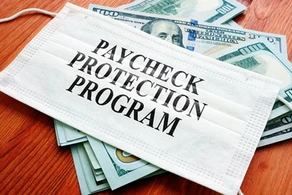The Small Business Administration (SBA) has been busy over the last couple days issuing significant new guidance. I’ll be working on a comprehensive update in the coming days. I fully expect to see more guidance in the coming days that will be relevant to the preparation and planning for forgiveness applications. Below is a summary of the highlights every PPP borrower should be aware of:
-
New Applications
-
The SBA has released a revised full version of the PPP Forgiveness Application They separated the instructions from the application, which makes it much more digestible, functionally it is the same form
-
The SBA also released a short version of the PPP Forgiveness Application (Form EZ). If you are eligible to use the form, you get to skip the many calculations included in the full form, like salary/wage reductions and all those headcount calculations. You must meet one of the following criteria to be eligible to use this simplified form:
-
Self-employed individual who had no employees at the time of the PPP loan application and did not include any employee salaries in the computation of average monthly payroll in the Borrower Application Form
-
Borrower did not reduce annual salary or hourly wages of any employee by more than 25% during the Covered Period compared to the 1st Quarter 2020 AND Borrower did not reduce the number of employees or the average paid hours of employees between January 1, 2020 and the end of the Covered Period
-
Borrower did not reduce annual salary or hourly wages of any employee by more than 25% during the Covered Period compared to the 1st Quarter 2020 AND Borrower was unable to operate during the Covered Period at the same level of business activity as before February 15, 2020 due to compliances with requirements established or guidance issued between March 1, 2020 and December 31, 2020 by various government health agencies.
-
We need further guidance on points 2 and 3. Specifically:
-
Bullet 2: What do they mean by “did not reduce the number of employees or the average paid hours of employees between January 1, 2020 and the end of the covered period”? Does that mean you can’t have any fluctuations at all?
-
Bullet 3: Does this include shutdowns dictated by States or local jurisdictions due to COVID-19? How do you prove you were “unable to operate during the Covered Period at the same level of business activity as before February 15, 2020”?
-
Employee (Non-Owner) Compensation
-
If you use the 24-week Covered Period, individual employee compensation is capped at $46,154 (24/52*$100,000)
-
If you use the 8-week Covered Period, individual employee compensation is capped at $15,385 (8/52*$100,000)
-
Wage and Headcount Safe Harbors
-
The language related to the safe harbors now includes “the earlier of December 31, 2020 and the date of this application”
-
This will ensure that borrowers maintain restorations made to wages and headcount through the application date (or December 31 in some cases)
-
This change in wording is the closest thing to fraud prevention as we have seen in the PPP program
-
Owner Related Items
-
The SBA revised the rules related to employer health insurance contributions, stating, “Do not add employer health insurance contributions made on behalf of self-employed individuals, general partners, or owner-employees of an S-corporation, because such payments are already included in their compensation.” I assume this includes C-corporate shareholders, but we need guidance to confirm this.
-
Owners are limited to the lesser of 2.5 months of an annualized $100,000 salary ($20,833) or 2.5 months of 2019 compensation
-
Those using the 8-week covered period are limited to the lesser of $15,385 or 8 weeks worth of 2019 compensation
The last couple weeks have been very positive for borrowers of the PPP program. The extension to 24-weeks, the 60/40 spending rule change, various clarifying statements, and the new EZ application will help many more borrowers achieve 100% forgiveness. If you are interested in the PPP program, you are running out of time. The program will close on June 30th and we know of several banks that have already stopped taking applications.
We will continue to update you as relevant guidance becomes available.




